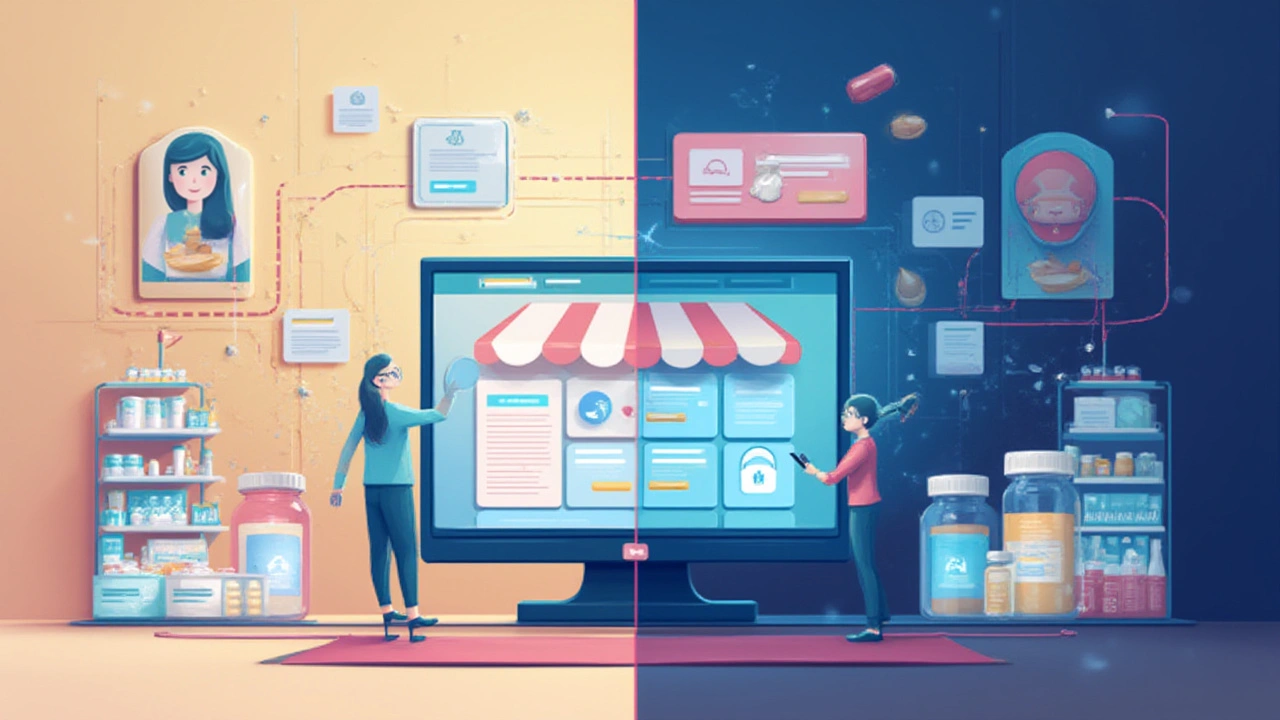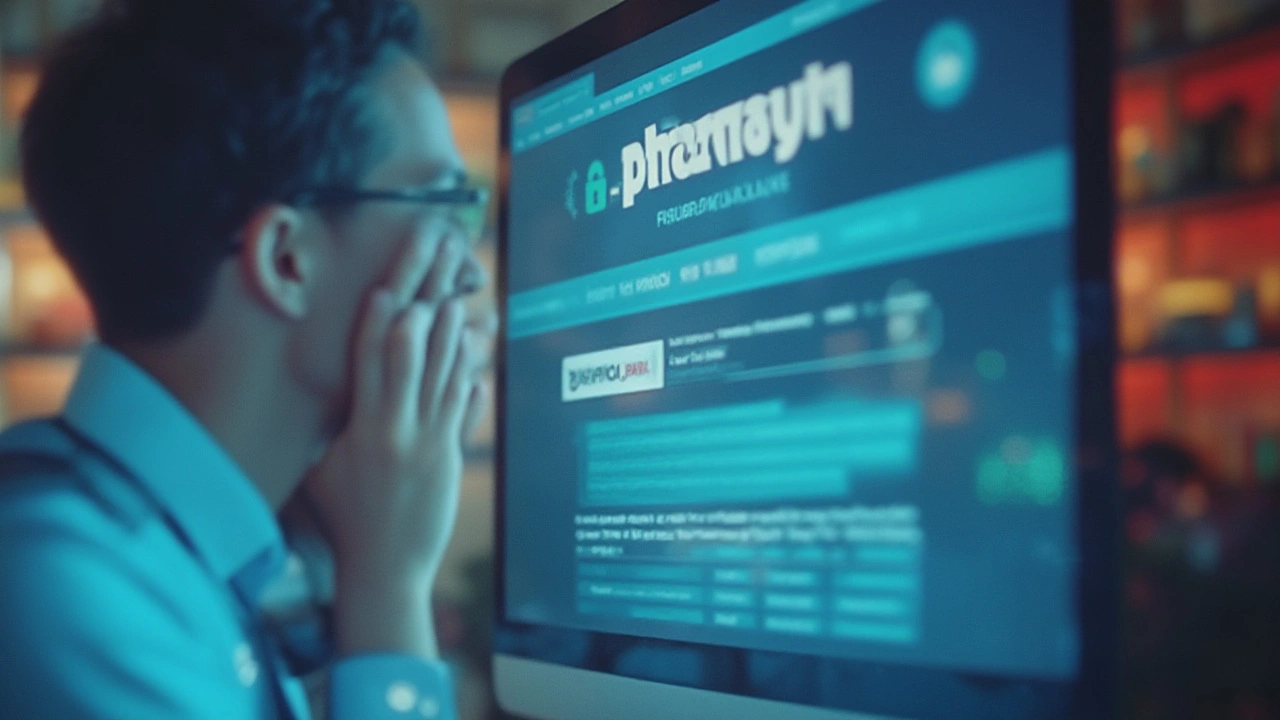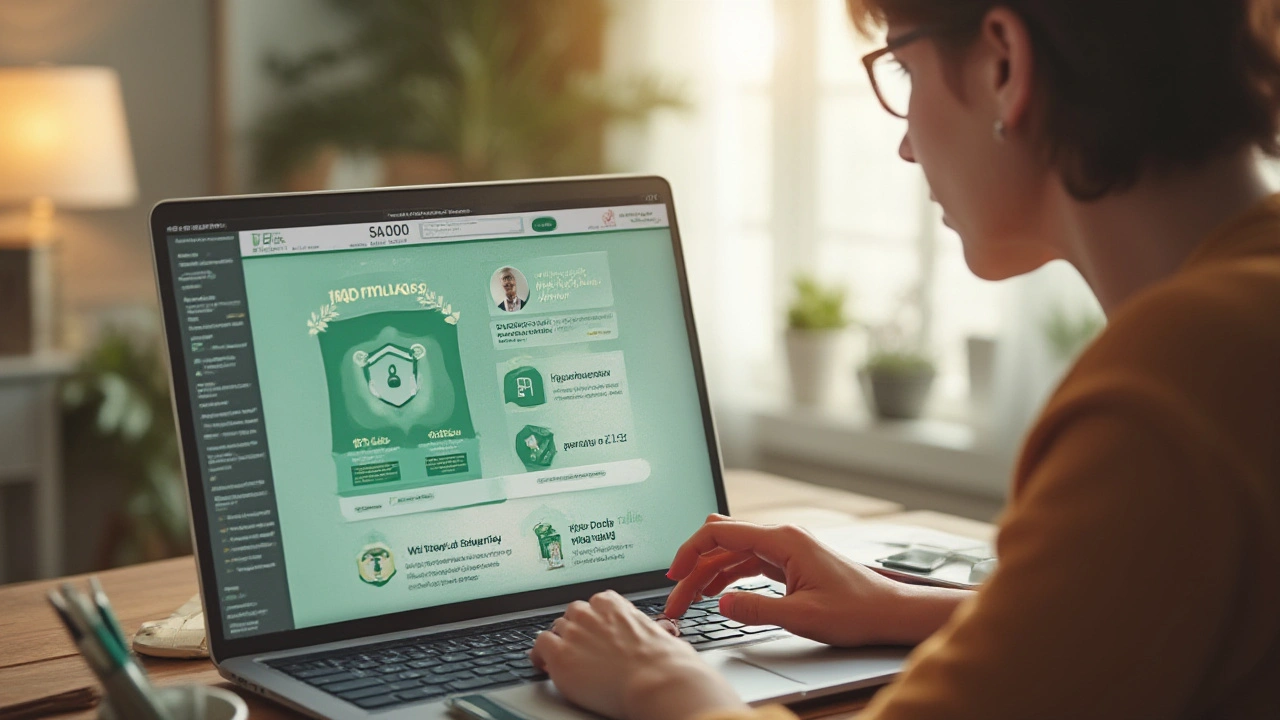Picture this: you’re online searching for your medication, hoping for a better price and that sweet convenience of doorstep delivery. But the internet is a bit of a wild west when it comes to health. Did you know the World Health Organization estimates one in ten medical products in low- and middle-income countries are substandard or fake? Fake meds can harm or kill, and dodgy online pharmacies are the quickest way to stumble into their trap. So, spotting a legit online pharmacy isn’t just a smart move—it could actually save your health or someone you love.
Why Verifying Online Pharmacies Matters More Than Ever
Every year, authorities seize millions of counterfeit pills—think fake blood pressure meds, imitation antibiotics, even bogus cancer drugs. Sometimes these fakes look exactly like the real thing, but they could be laced with random powders, chalk, or worse. Online pharmacies are everywhere, but not all of them play by the rules. Some pop up overnight, sell cheap “miracles,” then vanish before you even realize you’ve been ripped off. Real pharmacists have gone on record saying they’ve seen patients seriously harmed because of medicines bought from sketchy websites. If that’s not frightening enough, the U.S. FDA has found that only about 3% of the thousands of online pharmacies it checked complied with American pharmacy laws. That means the odds aren’t in your favor if you’re not careful. By checking a few important boxes—accreditation, website security, and a strict prescription policy—you’ll instantly delete most of the risky sites from your list.
Your No-Nonsense Checklist for Online Pharmacy Trustworthiness
First up, look for accreditation. Trustworthy online pharmacies are proud to display seals from organizations like the NABP (National Association of Boards of Pharmacy) in the U.S. or similar recognized regulatory bodies for other countries. Don’t just take their word for it—click those seals. Legit seals are clickable and will take you to a certification page on the accrediting organization's site. If they’re just images or go nowhere sketchy, that’s your first red flag. The ".pharmacy" domain is another good sign. Pharmacies using this show they’ve gone through extra screening. But even a real-looking website isn’t enough if it skips over security.
SSL security is your next checkpoint. You can spot SSL by looking for a padlock in your browser’s address bar and the ‘https’ at the start of the URL. This encryption means your data isn’t floating around for hackers during checkout. If you ever land on a pharmacy’s checkout page and the padlock is missing, don’t risk sharing your personal details. Scammers love hunting for unsecured sites—they might swipe your info and your money in the process. Take a second to inspect their privacy policy too. Reliable pharmacies care about your health records and won’t sell your data to the highest bidder.
Next, there’s the question of prescriptions. Every legit pharmacy should require a valid doctor’s prescription for prescription-only medicines. Full stop. If you can get antibiotics, painkillers, or anything prescription-based just by clicking add-to-cart, the pharmacy is breaking the law. Guess which group routinely skips this step? You guessed it: criminal outfits that have no interest in your health. Some shady sites will even offer fake “online consultations” as a shortcut. A real consultation is with a licensed healthcare provider who reviews your medical history, not a chatbot firing generic questions. Pharmacies following the rules will either ask you to upload your prescription or have your doctor send it directly.
Finally, check their contact details. Reliable pharmacies have a real address, working phone line, and staff that reply within working hours. No address or some sketchy P.O. box? That’s another big warning sign. Drop them a question before buying and see how they respond. A proper business wants your trust and will happily answer your questions. Looking for inspiration? Here’s a deep dive into what makes a reliable online pharmacy and how some sites try (and fail) to fake it.

Red Flags and Sneaky Tricks to Watch Out For
The bad guys are getting better at looking legit. You’ll often find slick designs, screens full of smiling doctors, and customer reviews that sound too good to be true (because they probably are). Start by scanning the site for spelling errors and awkward language—these are surprisingly common because many scam operations run overseas. Watch out for prices that are dramatically lower than what you’d find at your local pharmacy. Sure, online deals are real sometimes, but knock-off cancer meds for $10 a bottle? That’s fishy. If the business claims to ship “worldwide, no prescription needed,” or boasts miracle cures, be extra careful. Headlines like “No doctor visit, no worries!” mean you’re probably on a rogue site.
Another trick? Fake certifications. Some websites copy and paste logos or even invent their own seals. Hover over any badge or logo to make sure it’s clickable and leads to a real certification page. Can’t find a license number or regulatory body? If you’re in the U.S., check the NABP’s Not Recommended List, which features more than 35,000 problem pharmacies as of 2025. Transparency is also a big deal. An honest pharmacy will list the country where their medicines are sourced or manufactured, and should offer product information sheets. If all you see are vague promises and no hard details, they might have something to hide.
Don’t forget about your inbox. Reputable pharmacies never spam you with unsolicited emails offering cheap, exotic, or hard-to-get medications. Scammers do. Watch out for messages stuffed with questionable links and wild guarantees. And reviews? Take them with a grain of salt. Cross-check third-party sites, search for consumer complaints, and look up the business on forums where real people share their experiences. If there’s smoke, there’s usually fire.
Extra Steps to Protect Yourself When Shopping for Prescription Meds
Use your gut, but back it up with smart detective work. Before you buy, search for the pharmacy name along with words like “scam,” “fake,” or “review” to see what others are saying. Legitimate businesses should pop up in reputable health forums and review platforms, with consistent info and satisfied customers. Look up the pharmacist’s name and credentials—these should be visible, along with the store’s license number. Call the listed phone number: Did a real person answer? Did they sound knowledgeable?
Make online purchases using a credit card, never a wire service, gift card, or cryptocurrency. Credit cards offer fraud protection in case things go sideways. Keep screenshots and transaction details handy. If you suspect a counterfeit or fishy site, report it to your country’s drug safety agency. In the U.S., that’s the FDA’s MedWatch—just a few clicks can stop someone else from being duped. And never share more info than is absolutely necessary. Birth dates, full medical history, and loads of personal information aren’t needed for a prescription order. If the site hounds you for weird details, you’re likely handing info to a scammer.
Stay skeptical if the pharmacy suggests “alternative” medications without your doctor’s input or tries to upsell you odd supplements. Your real pharmacist knows your health background and would never take such risks. Regularly check your package when it arrives. Labels should have your name, actual dosage, pharmacy contact info, instructions in clear English, and a real expiration date. No label or foreign instructions? Don’t use it. If a medication’s color, shape, or packaging differs from your usual refill, contact your pharmacist before taking anything. One study from 2023 found that physical differences were a top clue for patients spotting counterfeits, so your eyes can catch things a lab sometimes misses.

Long-Term Peace of Mind: Building a Safer Online Shopping Habit
Once you’ve found a trustworthy source, keep a record of your experience. Bookmark verified pharmacy sites, note customer support numbers, and write down shipping details or medication lot numbers. Sometimes, even good pharmacies can be targeted by cyber threats or supply chain issues, so it pays to stay alert. Subscribe to a product recall alert service from your country’s health agency. Free reminders could catch a problem before your meds even leave the warehouse.
Be wary of “partner” or “affiliate” offers from your trusted pharmacy unless you can independently verify those sites too. Scam hubs can look exactly like your usual, reliable source—the only difference is the website address is off by one letter. It’s a silly trick, but thousands have been fooled and lost hundreds or even thousands of dollars. Multi-factor authentication for your online pharmacy account adds another layer if hackers go sniffing around. Changing your password every few months isn’t overkill, especially for sites handling sensitive medical info.
Don’t assume your prescription is safe just because the first few orders went fine. Trusted sources occasionally lose their license or get bought by less scrupulous companies. Keep scanning for the same accreditation, SSL lock, and prescription policies each time you log in. Sharing your positive experiences—where to buy, what worked, who helped—can do more good than you might think. Your review could steer someone away from a fake pharmacy and help them find a committed, safe provider instead. Getting your medications online is about balancing convenience and vigilance. Make your health the main priority, not just the price tag. That’s how you win at the pharmacy game, every time.

Comments (11)
Adrian Hernandez
July 18, 2025 AT 17:16
Honestly, I've always been suspicious of online pharmacies. There's just so much fake stuff out there, and it feels like the regulators are always one step behind. This checklist is a decent start, but I swear, the moment you see a website without HTTPS or no legit accreditations, just run.
Plus, these days, scammers are getting craftier with their fake reviews and certifications. It's scary how easy it is to get duped. Anyone else feel like we need a universal, ironclad authority to verify these places? Because most of the time it feels like a free-for-all where the consumer is the one paying the price—sometimes literally, risking their health.
Anyway, thanks for breaking it down. I’m bookmarking this. Vigilance is key.
Steve Moody
July 21, 2025 AT 19:46
Ah, the golden age of internet convenience! Yet, ironically, simultaneously fraught with peril for the uninitiated. One must be fastidious when examining online pharmacies—particularly scrutinizing their SSL certificates, which, if absent or invalid, is an immediate red flag. Moreover, the missive recommending checking the pharmacy's accreditation is not just sage advice—it's mandatory.
Now, on the subject of grammar and website presentation, a professional site will rarely have egregious typos or poor language, which are subtle giveaways of a fly-by-night operation. However, we shouldn't be obtuse—some legitimate international pharmacies might not have flawless English; context matters.
But let's not forget the necessity of ensuring they require a valid prescription, a sine qua non for legitimate medical sales. Vigilance, people, vigilance!
Steve Helsel
July 23, 2025 AT 21:12
Eh, this all seems like common sense to me. If you can't be bothered to check these things, then maybe you deserve to get scammed. Kinda lazy to expect the internet to hold your hand on something as serious as medication.
Look, if it looks sketchy, it probably is. That's my take. No need to overcomplicate things with a huge checklist. I mean, SSL? Yeah, but if they're asking for your prescription and the price looks reasonable, you're probably okay.
But hey, if people want to keep getting ripped off, that's on them.
Narayan Iyer
July 25, 2025 AT 19:12
I'm really intrigued by the intersection of technology and healthcare regulation here. The point about SSL security is especially pertinent, but I think there's a wider conversation to be had about how digital health ecosystems need to adapt to burgeoning online pharmacies.
For example, blockchain could potentially provide immutable proof of drug provenance and dispensing records, which would be revolutionary in combating counterfeit drugs. Of course, implementing such technology universally would be challenging, given the variations in legal frameworks worldwide.
Has anyone seen practical applications or pilot programs using these technologies in pharmacy safety? It seems like a promising direction beyond checklists and manual verification.
Chip Hutchison
July 31, 2025 AT 14:32
I really appreciate how this checklist pays attention to both practical and ethical considerations. It’s important not just to protect yourself from scams but also to understand that legitimate pharmacies adhere to strict regulatory standards to keep everyone safe.
Sometimes, I worry that the voices advocating for more access to medicines forget these complexities. Online pharmacies can be inclusive by making meds available, but it can't be at the cost of safety. The part about verifying accreditations really helps bridge that gap.
Anyone else ever had a positive experience navigating this kind of verification? What did you find most helpful?
Carlise Pretorius
August 2, 2025 AT 19:32
yaaaas i really need this reminder its so easy to just click on some dodgy links and end up getting fake meds, honestly the internet feels like the wild west sometimes lol
gr8 tips about SSL and prescription policies tho, lots of ppl just ignore the fine print and get stuck with fake stuff or nothing at all. also accreditations? huge yes, makes me feel a lil more safe even if i still double check with my doc
there should probs be a big effort to make legit online pharmacies more visible so ppl dont get scammed all the time
duncan hines
August 7, 2025 AT 05:32
Ugh, I can’t believe people still fall for these fake pharmacies! Like, it’s 2024, come on. If your online pharmacy doesn’t have a freaking verification logo posted somewhere, no SSL, and it pushes you to skip the prescription? Just close the tab!
And don't get me started on those cringe-worthy websites that look like they were designed by someone in 1999 with ClipArt everywhere.
It’s a shame people get desperate and end up buying fake drugs that can actually be dangerous. This post is elementary stuff, but I guess some need it spelled out.
Jessica Hakizimana
August 9, 2025 AT 10:32
This checklist really highlights something I think a lot of us overlook—the importance of prescription policies. I used to think, 'Why do I need a prescription online?' but medications can be harmful if taken incorrectly. The prescription serves as a vital gatekeeper in ensuring the appropriateness of what we're taking.
Also, seeing mentions of SSL and accreditation made me realize the online world has its own safety nets, and it’s up to us to use them wisely. It's empowering to approach online pharmacies with knowledge instead of fear.
Thanks for encouraging the community with such a thoughtful guide!
Sheila Hood
August 11, 2025 AT 15:32
As someone who’s spent way too much time unraveling shady websites masquerading as legitimate pharmacies, this checklist is a lifesaver. It cuts through the nonsense and tells people what really matters.
But a word of advice—sometimes sarcasm aside, you don’t want to assume the worst immediately, but always verify. It’s pretty incredible how convincing some fake sites can be. Seriously, checking for transparent contact info and legitimate licenses is your friend.
And if a deal looks too good to be true, it probably is. That’s been my motto for years.
Danielle Watson
August 13, 2025 AT 20:32
Just chiming in to say this thread has been super informative! I had no idea about some of the SSL and accreditation check details before.
One thing I try to do is look up reviews from multiple sites for any online pharmacy—red flags pop up in comments pretty quickly.
Also, I appreciate the mix of tech advice and practical wisdom here. It’s a nice balance.
Achint Patel
August 16, 2025 AT 01:32
Wow, this discussion nails an important philosophical paradox in contemporary healthcare—the tension between accessibility and trustworthiness. We want medicines available to everyone, but how do we maintain the sanctity of quality and safety?
This duality requires ongoing dialectics, moving beyond checklists to societal consensus on ethical frameworks and infrastructural investments in verification technologies. Only then can we transcend the binary of trusting or distrusting online pharmacies based on superficial signs.
In essence, this is a microcosm of the broader challenges facing digital society.